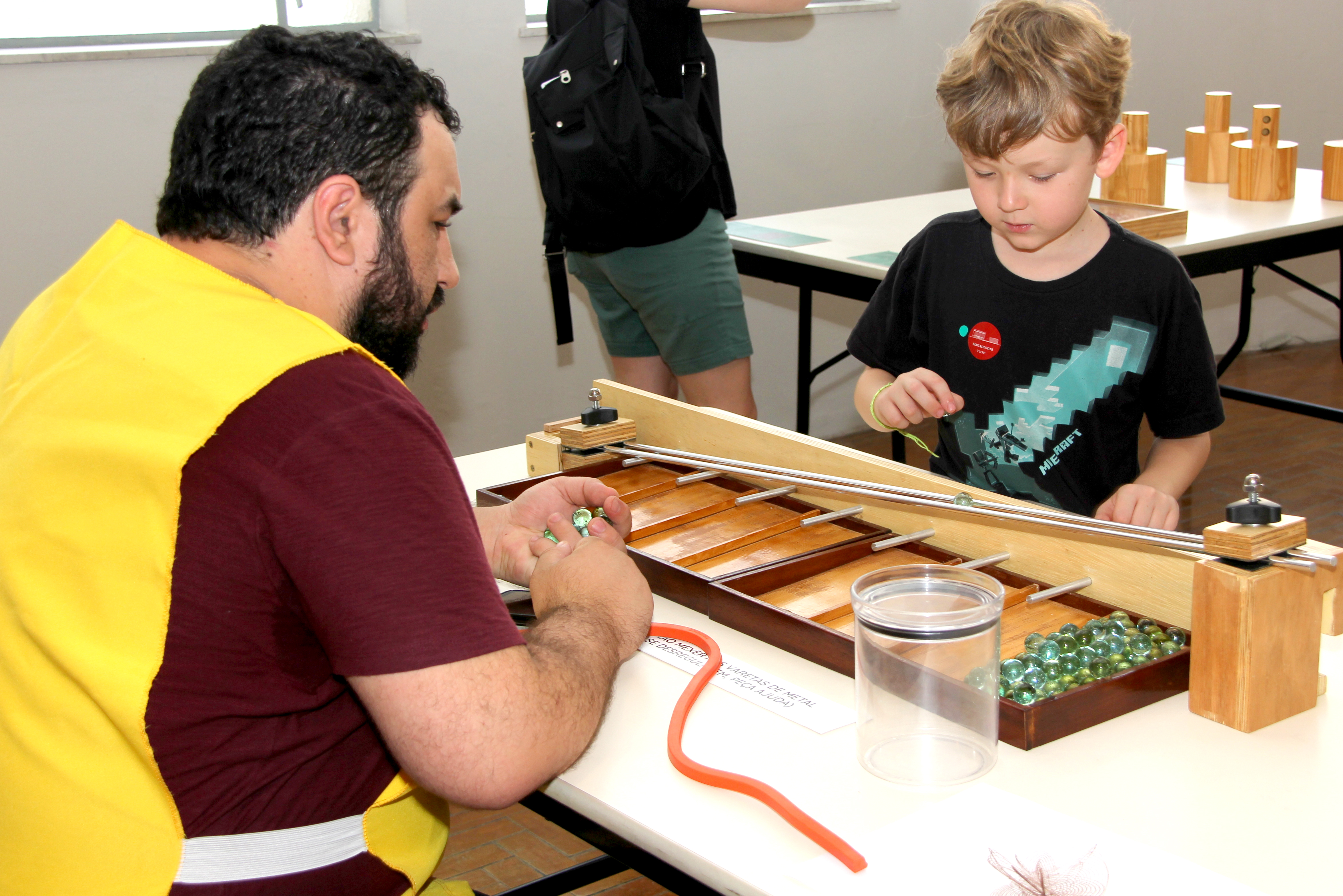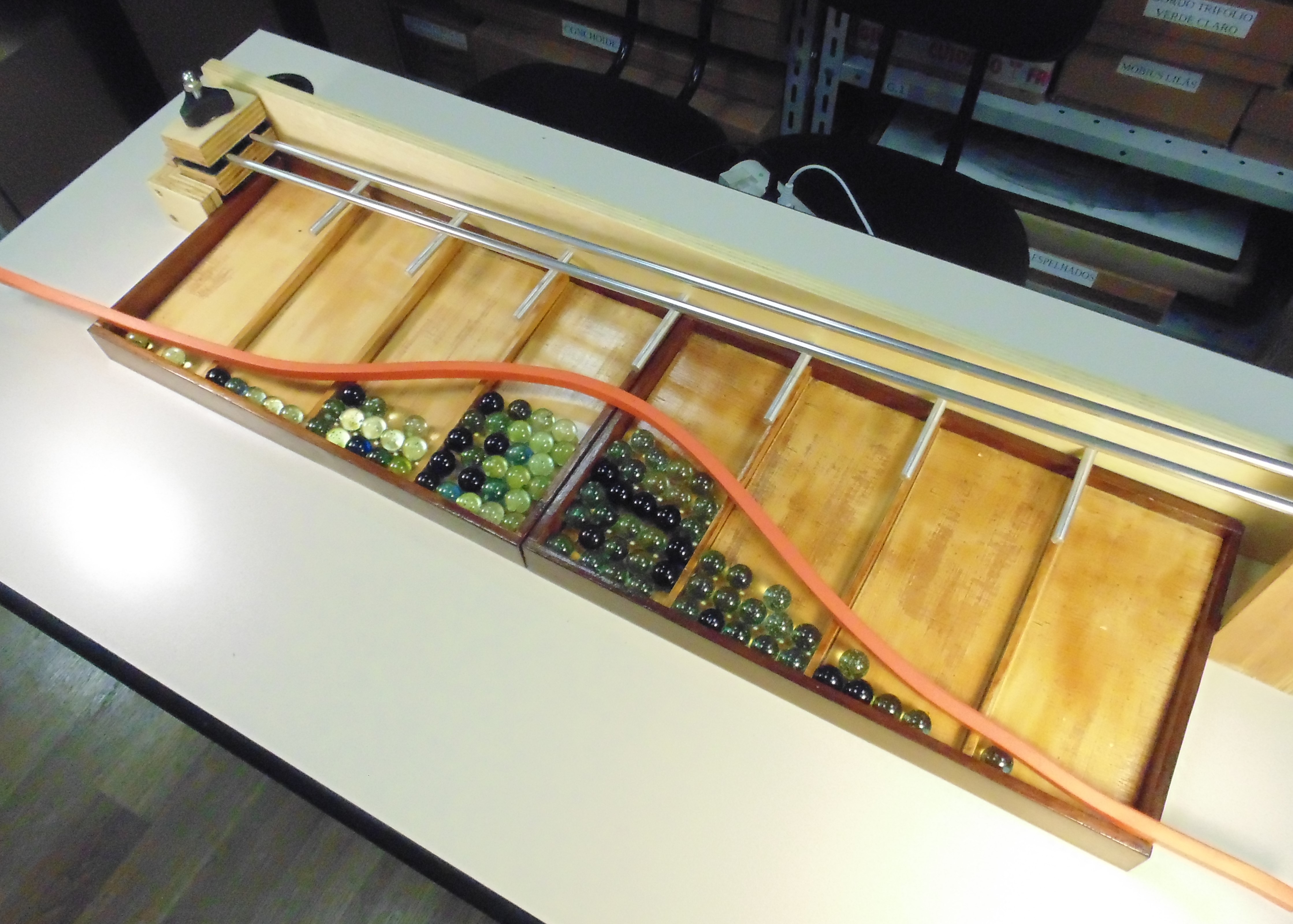INNACURATE MARBLES
The world is full of imperfections, even if that world is a factory producing parts in series. It is impossible to produce 100% identical parts, so the question becomes how much imperfection can be tolerated in the manufacturing process.
It is up to engineers, using statistics, to understand the margin of error of the parts produced, what the acceptable level of error is and what can be done to adapt one thing to another.
We do not know the process of making marbles and we know that hardly anyone will care about the slightest differences between the diameter of one and the other, but it is interesting to observe how these variations are distributed.
In the video below, we show a way to understand this distribution! If the sticks are well positioned, when we release the marbles from the highest part of the sticks, we will see each marble falling at the point where the distance between the sticks is greater than their diameter.
It is interesting because, like most of the quantitative variables found around the world, the diameter of the balls is distributed under a Gauss curve, meaning that there are very few balls with very small or very large diameters, while most of them have a diameter median.
This phenomenon can also be seen in the heights, weights and blood pressures of a certain part of the population, in the time spent by a certain group of students to take a test, in the duration of a certain light bulb, among other examples.


